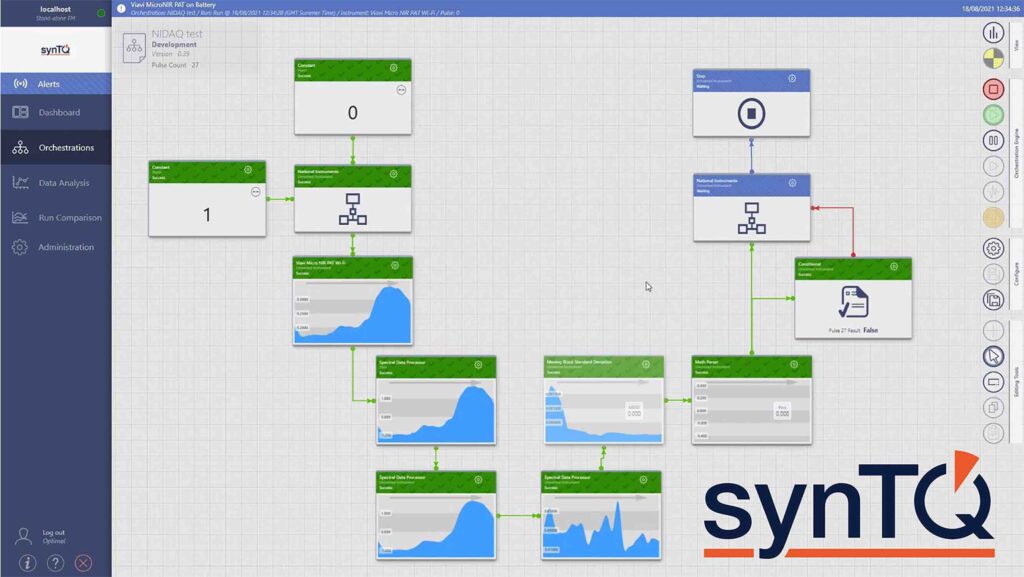Ever present in the chemical processing industry (CPI), solid mixing and blending are among the most crucial operations that influence end product quality. By avoiding under- and over-processing, manufacturers can deliver superior chemicals while optimising energy efficiency and cycle times. State-of-the-art automated solutions are important for the optimisation of mixing and blending while offering a quick return on investment (ROI). Martin Gadsby reports
The mixing and blending of divided solids, i.e. particulate, granular and powdered materials, are essential steps in many chemical manufacturing and processing plants. They are key to reducing inhomogeneities in composition and ultimately, delivering high-quality products. They are also particularly complex, making it exceptionally challenging for businesses to gain the in-depth understanding of their mixing and blending processes that can help to define optimum process conditions.
In addition, traditional inspection techniques that rely on thief sampling have numerous drawbacks that prevent large scale adoption. Firstly, these off-line methods are labour-intensive and lead to downtime, as there is often a long delay from when the blenders/mixers are stopped to the time the uniformity results are received, ultimately increasing the overall cycle time. Furthermore, thief sampling is difficult to reproduce and often the act of collecting some product may cause sample inhomogeneity, leading to result bias. Finally, such methods can expose operators to potentially hazardous chemicals and fine particles.
As a result, the CPI often relies on pre-defined processing conditions. As under-processing cannot overcome the heterogeneities within a batch, affecting end product quality, many manufacturers tend to pre-set parameters that favour over-processing. However, this leads to increased cycle times, energy usage and productions costs, while still compromising quality. Particle attrition, segregation and heating can also occur. Moreover, this conventional approach cannot address the inevitable variations in the raw materials that are used.
Moving towards responsive, real-time control
In order to consistently deliver products that meet the necessary specifications while maintaining highly efficient process conditions, the CPI requires accurate, real-time process control that is able to measure homogeneity in real time. This can be achieved by leveraging smart, Process Analytical Technology (PAT) enabled automation, which can be a key technology in the digital transformation of any business.
More precisely, intelligent blending and mixing operations are able to utilise real-time, closed-loop feedback control that reacts appropriately throughout the blending process. Also, it can take into account any changes in the raw materials’ critical quality attributes (CQAs), such as particle size distribution, morphology or moisture content to maintain the optimal blend/mix and content uniformity.

A PAT knowledge manager platform, such as synTQ, is able to determine blend uniformity. When the process is deemed to be complete, it is automatically stopped
This is achieved by making real-time, non-destructive uniformity measurements via sophisticated, integrated (typically spectral) instrumentation, therefore eliminating any downtime associated with off-line analysis. The results from these measurements are directly fed to software that either simply displays the changing spectra, or utilises predictive models to determine whether the automated system should continue or stop blending, to achieve products of consistent, high quality.
As a result, both under- and over-processing can be avoided, optimising production times, time-to-market and energy usage while minimising waste and reworks. In practice, studies have suggested cycle time reductions of up to 35%1.
Automated blending control in practice
A practical example of such a PAT-enabled automated process control framework consists of a batch blender equipped with a near-infrared (NIR) spectrometer on its lid. This analysis technique is ideal, as it is extremely fast, highly reproducible, non-invasive and requires no sample preparation. Every time a cycle is completed, the acquisition of a NIR spectrum is triggered. Similar technology can also be used in continuous blenders.
The instrument communicates the obtained spectral data to a PAT knowledge manager platform, such as synTQ. This is able to process the data and determine blend uniformity in a myriad of ways. Typically, in the case of a batch blender, the variability of a spectra (or certain points within that spectra) are measured and, as the variability decays to within an acceptably consistent range (using a technique such as moving block standard deviation or ‘F’ test), then the process is deemed to be complete and it is automatically stopped.
In the case of continuous blending, a prediction model is often used, which is generated using Multivariate Analysis (MVA) techniques. By manipulating the process parameters, the real-time blend uniformity prediction can be maintained within its ‘sweet spot’.
More than automated testing
Besides controlling the process, a solution such as synTQ also provides full data integrity. In effect, it automatically stores all key data to ensure full traceability of all input and derived data as well as instrument settings, in line with current good manufacturing practice (cGMP) guidelines as well as regulations on electronic records.
In order to fully leverage the benefits of computerised mixing/blending and real-time control, chemical manufacturers should partner with an automation system integration specialist with extensive experience in the CPI, such as Optimal. This collaboration can help businesses to identify key opportunities as well as delivering bespoke, application-specific setups that lead to quick, valuable ROI and ultimately enhance the company’s competitiveness in the marketplace.
1. Lee, W. B., Widjaja, E., Heng, P. W. S., & Chan, L. W. (2020). De-risking excipient particle size distribution variability with automated robust mixing: Integrating quality by design and process analytical technology. European Journal of Pharmaceutics and Biopharmaceutics, 157, 9-24.
Martin Gadsby is Director at Optimal Industrial Automation.
 Engineer News Network The ultimate online news and information resource for today’s engineer
Engineer News Network The ultimate online news and information resource for today’s engineer





